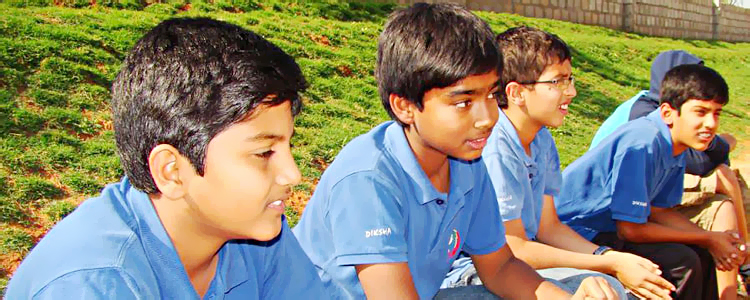How does the Wadorf High School prepare students for the challenges and opportunities they will meet in the real world?
Imagining this real world is complicated, as we can easily come up with contrasting images. On the one hand, our current time overflows with promise and possibility. Many young people today, both women and men, feel that their choices are endless. They can travel the world, study abroad, and design their own college major.
Yet, at the same time, daily installments of discouraging news on global warming, terrorism, violent crime, and famine, leave many young people feeling overwhelmed by a world filled with seemingly complex, unsolvable problems.
Regardless of the perception, it is the responsibility of educators today to send young people forth from high school adequately prepared to meet the future with confidence. No matter which view of the future we ascribe to, our assignment is the same. We need an education that will enable young people to impart purpose and direction to their lives.
Conscientiously developed by a cohesive educational program are these capacities
- Creative thinking permeated with imagination, flexibility, and focus.
- Emotional intelligence, empathy, and self-esteem.
- Physical vitality, stamina, and perseverance.
- Inner depth borne out of an abiding appreciation and responsibility for nature, for work, and for their fellow human beings.
The development of thinking is the most vital work done in a Waldorf high school. The entire four-year program is designed with this in mind. Regardless of the subject in ninth grade, whether it is geology, modern world history, or English literature the students are asked to describe in detail exactly what they have observed. This approach strengthens the students perception and understanding of reality and challenges them to look beyond the cliche, the culturally accepted or current way of seeing the world.
The junior curriculum could be characterized by the theme of invisibility: namely the study of those subjects that draw the student into areas that are not accessible to the experience of the senses. In chemistry, the students enter the invisible kingdom of the atom; in physics they explore the invisible world of electricity (which we can see only in its effects, not in its inherent nature). These voyages to invisible landscapes pose a central question intended to strengthen the student's powers of independent analysis and abstract theorizing. The question is Why? Why are things this way?
One of the most striking features of Waldorf high school graduates is their quiet confidence. This sense of confidence comes from their ability to think clearly as well as empathetically, to be awake to the world, but not removed and detached.
While thinking is being developed through a rigorous academic program, the arts continue to play an important role in the educational process. Sculpture, painting, bookbinding, calligraphy, and choral singing are part of every high school student's educational program. The emotional resilience that students need during these turbulent and unpredictable teenage years is bolstered through an artistic program that encourages self-expression and communication.
Well-rounded students remain sensitive to the mysteries and subtleties of life, yet at the same time emotionally connected with others and actively involved in the world. The simple motif of engaging students through head, heart, and hands has sounded repeatedly through all three phases of a Waldorf Education in an attempt to enliven student's thinking and to make a child's school experience meaningful. In the end this educational framework has enabled Waldorf graduates to engage life deeply with confidence and direction. In this way all that is best [has been] kindled in the young, not the intellect that remains passive, but the will that stirs thinking to creative activity.
